Search Results
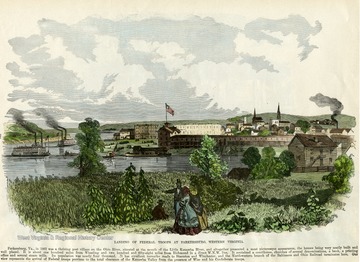
- IDNO:
- 039188
- Title:
- Landing Of Federal Troops at Parkersburg, Western Virginia
- Date:
- ca. 1861
- Description:
- A colored wood craving illustration of Parkersburg on the Little Kanawha River in Wood County, Va. (later West Virginia). Several Federal troops from states west of the Ohio River were deployed here during the Civil War to hold vital railroad lines and turnpikes of which Parkersburg was the terminus.
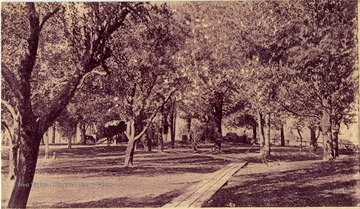
- IDNO:
- 039652
- Title:
- Stonewall Jackson Headquarters, Winchester, Va.
- Date:
- 1912/11/22
- Description:
- Postcard photograph of Stonewall Jackson's Headquarters. Most of the building is obscured by trees. See back of the original image for correspondence.
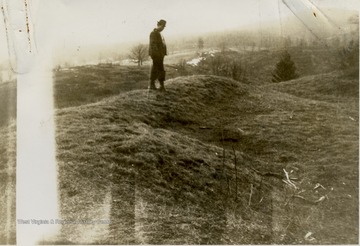
- IDNO:
- 039762
- Title:
- Part of Confederate Fortification at Camp Bartow , Pocahontas County, W. Va.
- Description:
- Confederate defenses established by General Henry Jackson, straddled the Staunton-Parkersburg Turnpike. The position was defended in an artillery fight on October, 1861, known as "The Battle of Greenbrier River"
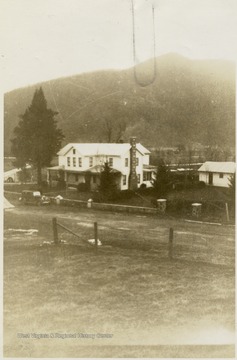
- IDNO:
- 039763
- Title:
- Historic Travelers Repose, Pocahontas County, W. Va.
- Date:
- ca. 1940
- Description:
- Once a renowned inn and stage coach stop an the Staunton-Parkersburg Turnpike. Owned and operated by Andrew Yeager before the Civil War, the inn laid between the two armies in the fall of 1861 and became a casualty of war. The front of the structure in the photograph was rebuilt by Yeager after the war.
![Human Confederate Flag and General R. E. Lee Monument, Richmond, Va. Printed on the back of this postcard, "The flag was made up of children from the schools of Richmond, the occasion being the unveiling of a monument to [Confederate] President Jefferson Davis". There is also correspondence and a postmark dated October 28, 1912.](/thumb/040035.jpg)
- IDNO:
- 040035
- Title:
- Human Confederate Flag and General R. E. Lee Monument, Richmond, Va.
- Date:
- 1907
- Description:
- Printed on the back of this postcard, "The flag was made up of children from the schools of Richmond, the occasion being the unveiling of a monument to [Confederate] President Jefferson Davis". There is also correspondence and a postmark dated October 28, 1912.
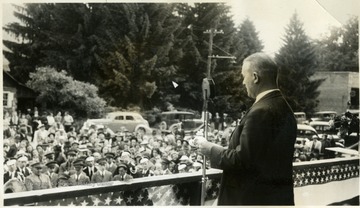
- IDNO:
- 040156
- Title:
- West Virginia Governor Homer Holt Addresses Crowd at Tucker County Courthouse Parsons, W. Va.
- Date:
- 1938/05/30
- Description:
- Holt delivers a speech at the dedication ceremony for the marker documenting the Civil War battle at Corricks Ford. Inscription on the marker: "Engagement between Federal troops under Gen. T. A Morris and Confederate troops under Gen. R. S. Garnett, one mile south, July 13, 1861. Garnett, mortally wounded in this action, was the first general to fall during this war . . ."
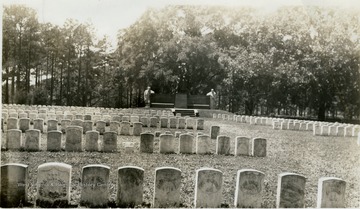
- IDNO:
- 040157
- Title:
- Andersonville National Cemetery, Andersonville, Ga.
- Date:
- ca. 1935
- Description:
- Andersonville was a Confederate military prison, notorious for the cruel treatment of Union prisoners. Over 200 West Virginia soldiers died here and are buried in this cemetery.
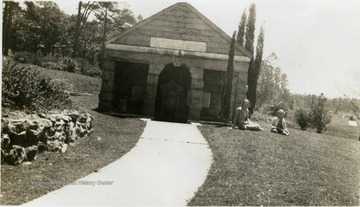
- IDNO:
- 040158
- Title:
- Providence Spring, Andersonville Prison, Andersonville, Ga.
- Date:
- 1937
- Description:
- Approximately 46,000 Union prisoners were held here including hundreds of West Virginians. All suffered and thousands died from disease, exposure, starvation and dehydration. During an August 1864 heavy thunderstorm, a spring appeared on the surface near the line of stockade, relieving the agonizing thirst of prisoners. The spring was named "Providence Spring".
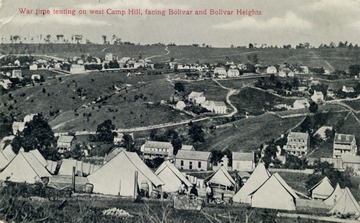
- IDNO:
- 040702
- Title:
- War Time Tenting On West Camp Hill, Facing Bolivar and Bolivar Heights, Jefferson County, W. Va.
- Description:
- Postcard photograph, probably taken early in the Civil War of a Union encampment.
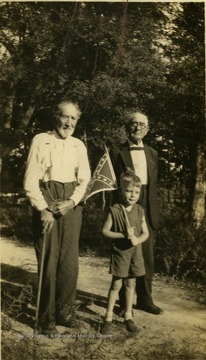
- IDNO:
- 040844
- Title:
- Confederate Veterans Captain J. E. Spooner and Adjutant Julius C. Frederick, Montgomery, Ala.
- Date:
- 1931/06/02-05
- Description:
- Frederick, a resident of Wheeling, Virginia when the war broke out, enlisted in the southern army. His unit was attached to the 27th Regiment in Harpers Ferry under Colonel Thomas J, Jackson (later Lt General Jackson). The 27th was part of what became known as the "Stonewall" Brigade. The photograph was taken at a Confederate Veterans Reunion in Alabama. The small boy is not identified.

- IDNO:
- 041056
- Title:
- Human Confederate Flag; Richmond, Va.
- Date:
- ca. 1916-1917
- Description:
- Printed on the front of the postcard, "And twill live in song and story though its folds are in the dust". In 1907, 600 school children formed the Confederate flag in Richmond, Va. during a reunion of Confederate veterans and the unveiling of the J.E.B. Stuart and Jefferson Davis Monuments.

- IDNO:
- 041076
- Title:
- Davis Cottage, Beckley, W. Va.
- Description:
- Headquarters of future United States presidents, McKinley and Hays when they served in the Union Army during the Civil War.




![Human Confederate Flag and General R. E. Lee Monument, Richmond, Va. Printed on the back of this postcard, "The flag was made up of children from the schools of Richmond, the occasion being the unveiling of a monument to [Confederate] President Jefferson Davis". There is also correspondence and a postmark dated October 28, 1912.](/thumb/040035.jpg)






